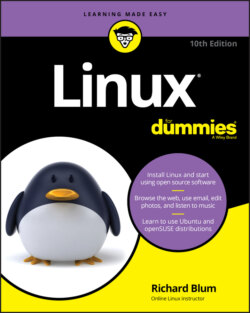Читать книгу Linux For Dummies - Richard Blum - Страница 20
Core Linux distributions
ОглавлениеA core Linux distribution contains the Linux and GNU operating system, one or more graphical desktop environments, and just about every Linux application that is available, ready to install and run. The core Linux distribution provides one-stop shopping for a complete Linux installation, no matter what your requirements are!
Table 1-1 shows some of the more popular core Linux distributions out there.
TABLE 1-1 Core Linux Distributions
| Distribution | Description |
| Slackware | One of the original Linux distribution sets, popular with Linux geeks |
| Red Hat | A commercial business distribution used mainly for servers |
| CentOS | The open source version of Red Hat designed for testing |
| Fedora | Another open source version of Red Hat, but designed for home use |
| Gentoo | A distribution designed for advanced Linux users, containing only Linux source code |
| SUSE | A commercial distribution for business use |
| Debian | Popular with Linux experts and commercial Linux products |
In the early days of Linux, a distribution was released as a set of floppy disks. You had to download groups of files and then manually copy them onto disks. It would usually take 20 or more disks to make an entire distribution! Needless to say, this was a painful experience.
Later, when home computers commonly had CD or DVD players built in, Linux distributions were released as either a CD set or a single DVD. Often you would download a single DVD image file (commonly called an ISO file after the file extension used), then burn that image onto a DVD. That made installing Linux much easier.
Nowadays, with many computers foregoing DVD players, Linux distributions are still released as ISO image files, but now utilities allow you to burn them onto a bootable USB flash drive. Modern computers have the ability to boot from the USB drive, which is still commonly found on both workstations and servers.
While having lots of options available in a distribution is great for Linux geeks, it can become a nightmare for beginning Linux users. Most distributions ask a series of questions during the installation process to determine which applications to load by default, what hardware is connected to the PC, and how to configure the hardware. Beginners can often find these questions confusing. As a result, they often either load way too many programs on their computer or don't load enough and later discover that their computer won't do what they want it to.
Fortunately for beginners, there's a much simpler way to install Linux.
